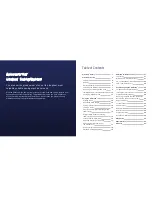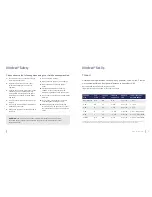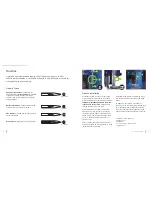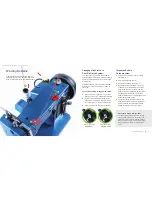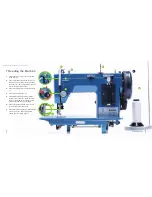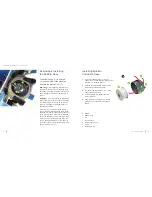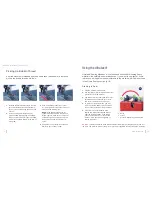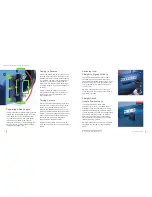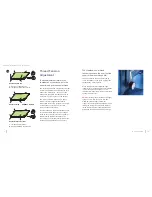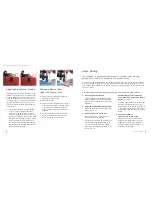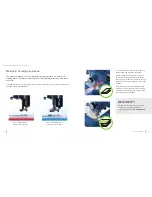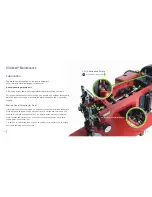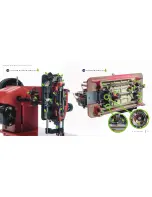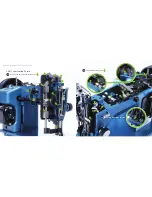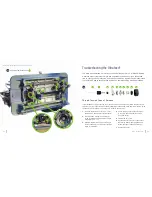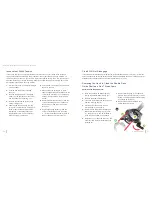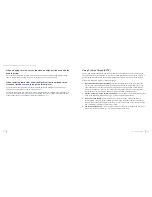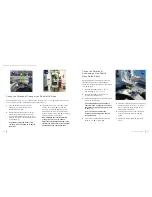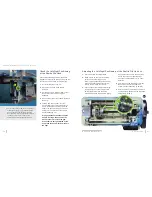
Thread Tension
Adjustment
Tension adjustment refers to the
combination of tension on both the
upper thread and the bobbin thread.
The correct combination of thread tension (
17
)
results in a stitch that looks identical on both
sides of the material (i.e., the knots of the
stitches are pulled into the fabric and are no
more visible on the top than on the bottom).
The primary problem when using a heavy
thread is incorrect upper thread tension.
When stitch tension is a problem, it is usually
a consequence of too much or too little
tension on the upper thread.
Tension changes to the bobbin thread should
only be made when upper tension changes
alone do not solve stitch tension. In general,
bobbin tension requires just about a two
ounce drag on the thread (similar to what you
feel when pulling dental floss off a spool).
The Ultrafeed
®
has a thread
tensioning knob on the front that the
upper thread runs through (
18
).
The upper tension knob can be turned up
to five revolutions to compress a spring that
squeezes two disks together.
When the presser foot is lifted the upper
tension disks are pushed apart. This releases
the top thread tension so fabric can be
removed from under the machine foot without
fighting thread tension.
DO NOT
lift the presser foot when the upper
tension knob is less than a 1/2 turn from
maximum (turned snugly clockwise).
If upper tension is tightened all the way down,
raising the presser foot may bend the lever
inside the machine that separates the disks,
preventing the disks from opening correctly.
Knots pulled to top:
1.
Decrease upper tension
2.
Increase bobbin case tension
Knots visible on bottom:
1.
Increase upper tension
2.
Decrease bobbin case tension
Knots centered
—
PERFECT STITCH
17
18
Ultrafeed
®
Guidebook: Using the Ultrafeed®
16
15
www.sailrite.com


